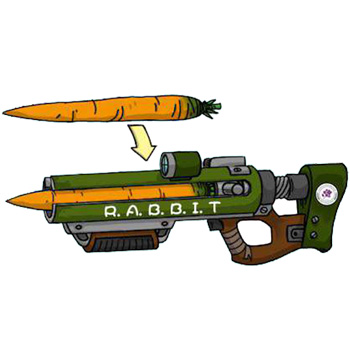If you don't know what the Goblin Laws of Gaming (GLOG) are, it's an incredibly light-weight, semi-incomplete OSR-style D&D B/X-inspired system. Although the system is in pieces, it is designed to be hacked.
The GLOG was initially released by Arnold Kemp in 2016 on
his blog Goblin Punch and
Skerples has made
his own version. The Type1 Ninja has released their own
Trenchcoat Edition of GLOG, as well. In terms of how a GM has to perform surgery on the system and jam their hands directly into the organs of the game, it is much like a D&D-themed Moment of Truth (MoT). I'd say it compares to GURPS in how it must be constructed, but GURPS is different from MoT and GLOG in this regard because GURPS provides instructions on how to perform surgery to accomplish whatever game you wanted. As has been noted on /r/osr, it's best to be played by a group that understands that it's to be hacked with another system. All said, GLOG is the definition of DIY D&D. You can expect to see my takes on GLOG in the future.
I'll quickly run through what I really appreciate about the GLOG. One of the most exciting aspects of the system is how it handles classes. Each class (or race, in some cases, depending on how the GM or the group wants to handle that) has only four "class levels" or class templates, labeled A to D. Each time a character takes a level in a class, he piles on one of the templates. So a character could take all of the Fighter templates and gain the advantages of Fighter A, B, C, and D. Or, a character could be a wizard-with-a-sword and have Fighter A and B and Wizard A and B. Multi-classing is very easy and allows a character to make something specific. Another boon of the class system is that classes grant abilities which are almost always qualitative and do not grant quantifiable advantages. Any quantifiable advantage will result to maximum, by the time you've accumulated all four of your class templates, a +4 bonus. To quote Kemp's thought behind this: "Abilities should give you a new ability, not just improve an existing one. Things like trapmaking and clairvoyance cannot be compared, because each is preferable in a certain situation ... Comparible [
sic] abilities are boring, and they lead to min-maxing, system mastery, and other shit I want to avoid." Amen.
GLOG uses the typical stats from D&D, but it's generation is a bit different. In Kemp's version, one still rolls in order for their statistics (i.e. their first roll determines Strength, next their Dexterity, etc.), however instead of rolling 3d6 one rolls 4d4. The average roll is 10, rather than 10.5; No one will have a stat as terrible as 3, only 4 and very rarely; and no one will start out with a stat modifier of +3 or -3. Many of the later incarnations use 3d6 to generate stats, but I prefer 4d4.
The Base Adventurer table shows how the character advances. Each character has the same basic progression. Their strange abilities granted by their classes or adventures are what makes them different. How they progress is nice as well. Rather than killing monsters, adventurers must loot and return to safety with said loot. I'm sure that some games have XP for monsters, and in Kemp's GLOG folder there's a PDF which seems to suggest that at one point (probably before he started calling him homebrew GLOG) he did award the party some amount of XP for monsters. If I ever decide on an amount to award PCs, I'll post an update on how I'm handling it.
The magic system is something incredible. It doesn't exactly allow for much priestly magic, although that's been done. It does provide magic with the danger to the caster that we all deserve. Mages are very strange, cramming, essentially, spirits into their skulls and Spellbooks. Magic is probably the best part of the system. Mages and
witches take greater risks with the more magic they employ. The more magic-dice a mage or a wizard invests into a spell, the greater the chance there is of a mishap or a doom. A mishap is a minor issue once doubles are rolled. A doom is something that seriously inconveniences the caster and could potentially kill them once triples are rolled. Though the mishaps and the dooms are fairly unlikely, they still offer some kind of hazard to playing with more powerful magic, which is a boon.
There are a few changes that I might consider bringing into the game. One thing is to replace 1d20 with 2d10, since it provides the game with a bell curve. I like bell curves. You should, too. That's the only change I'll mention, though. The GLOG is composed entirely of the Essence of Game-Hacking. When Kemp claims that the GLOG is "a pile of crayon-scribbled napkins that I've stapled together," he's not exactly wrong. The GLOG is actually an inspired collection of house rules and an approach to character class design. I suggest that you check out the GLOG for yourself and marvel at all of the wonderful ideas within DIY D&D.
I have linked several blogs on my blog roll which post GLOG material. The most prolific and well-known GLOG blogs, which I am aware of, are Kemp's
Goblin Punch, Skerples'
Coin & Scroll,
Two Goblins in a Trenchcoat from Type1 Ninja,
Unlawful Games from the Lawful Neutral.


